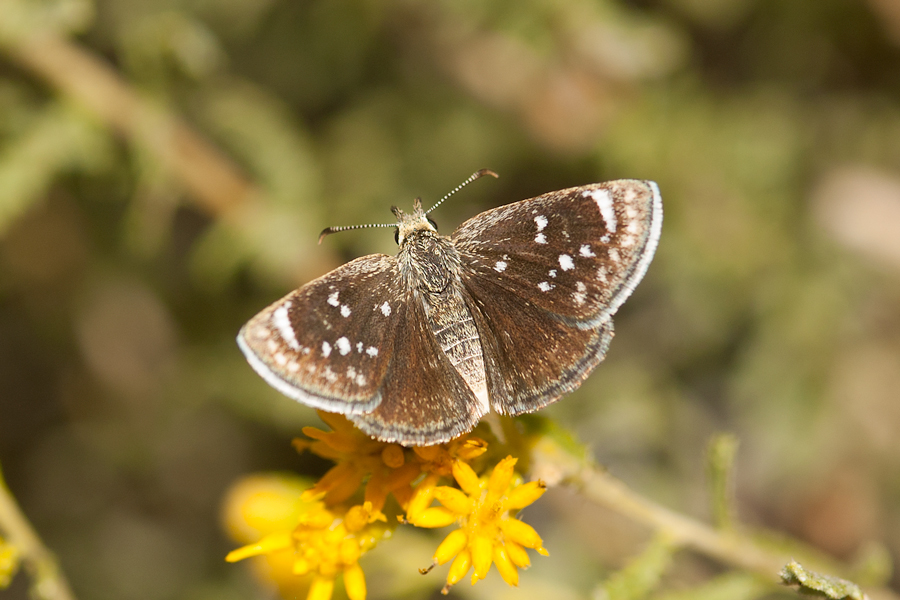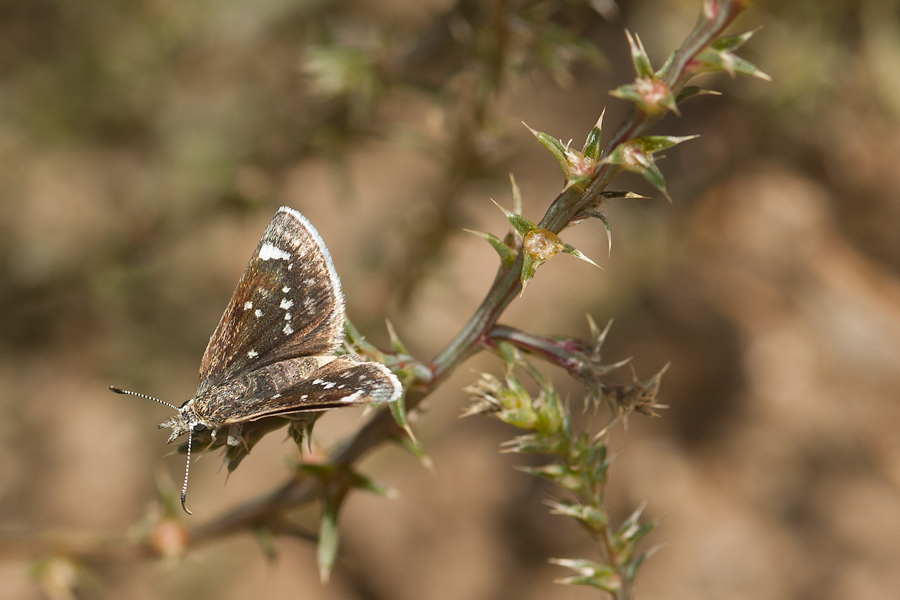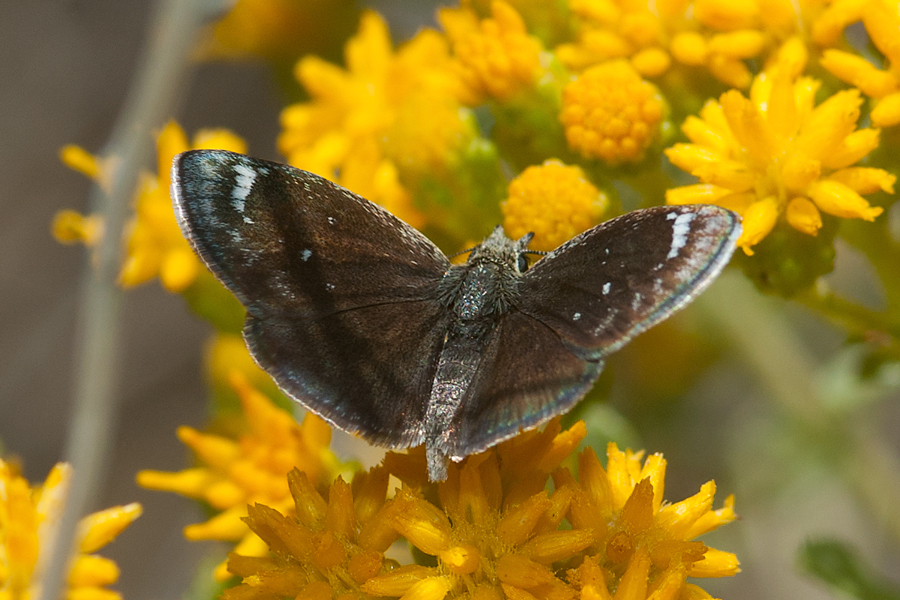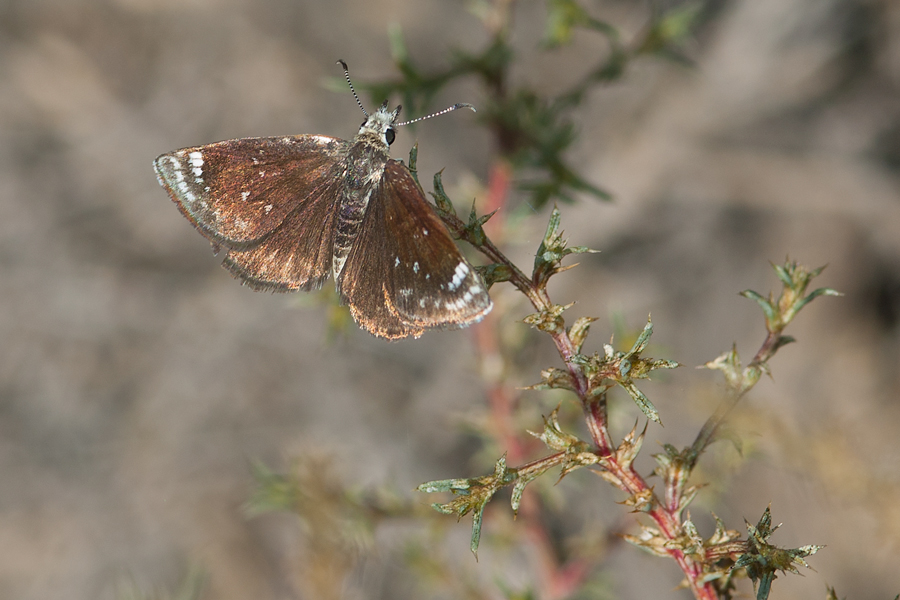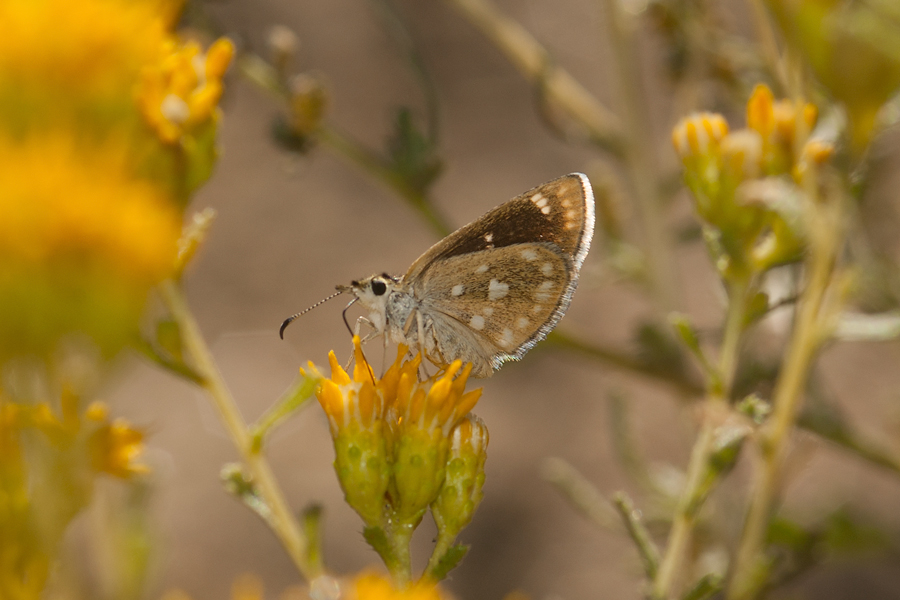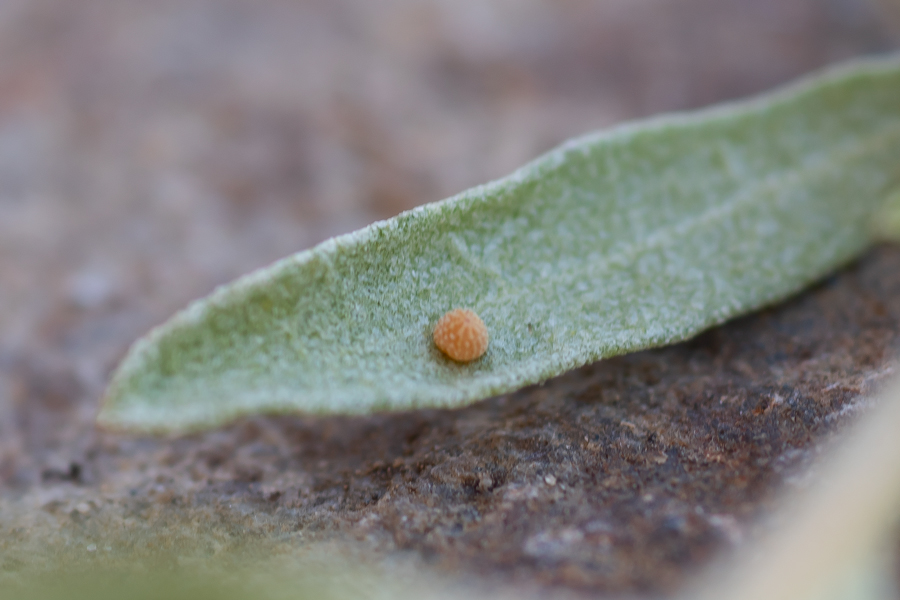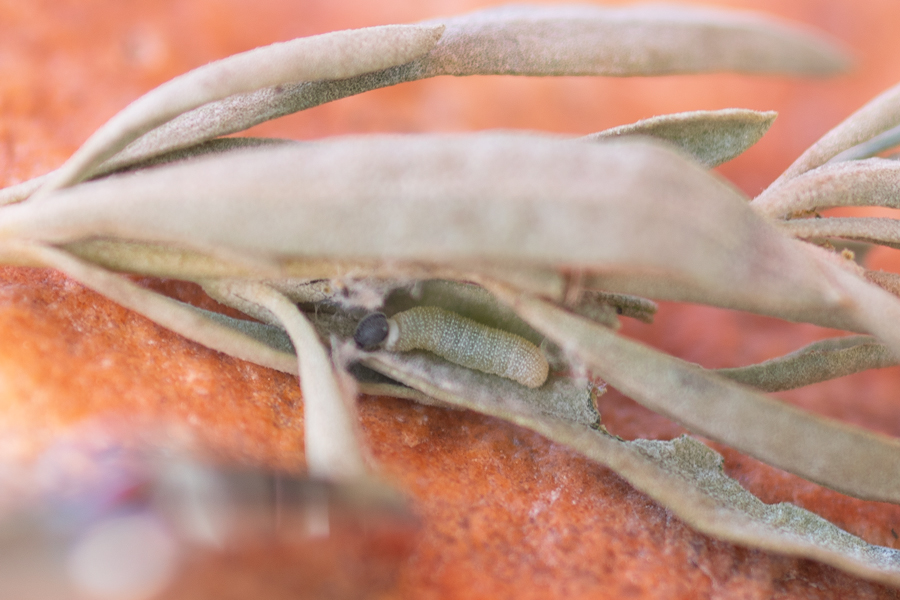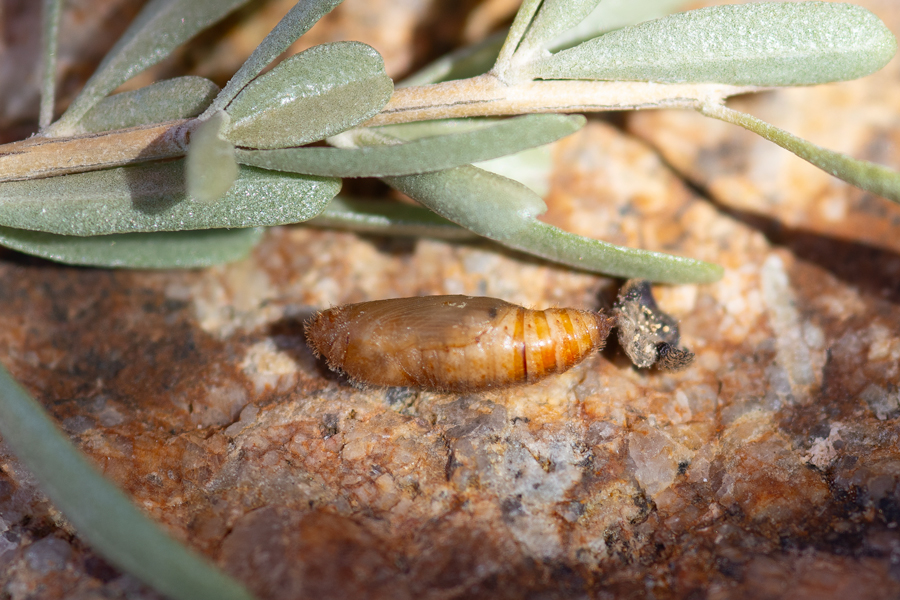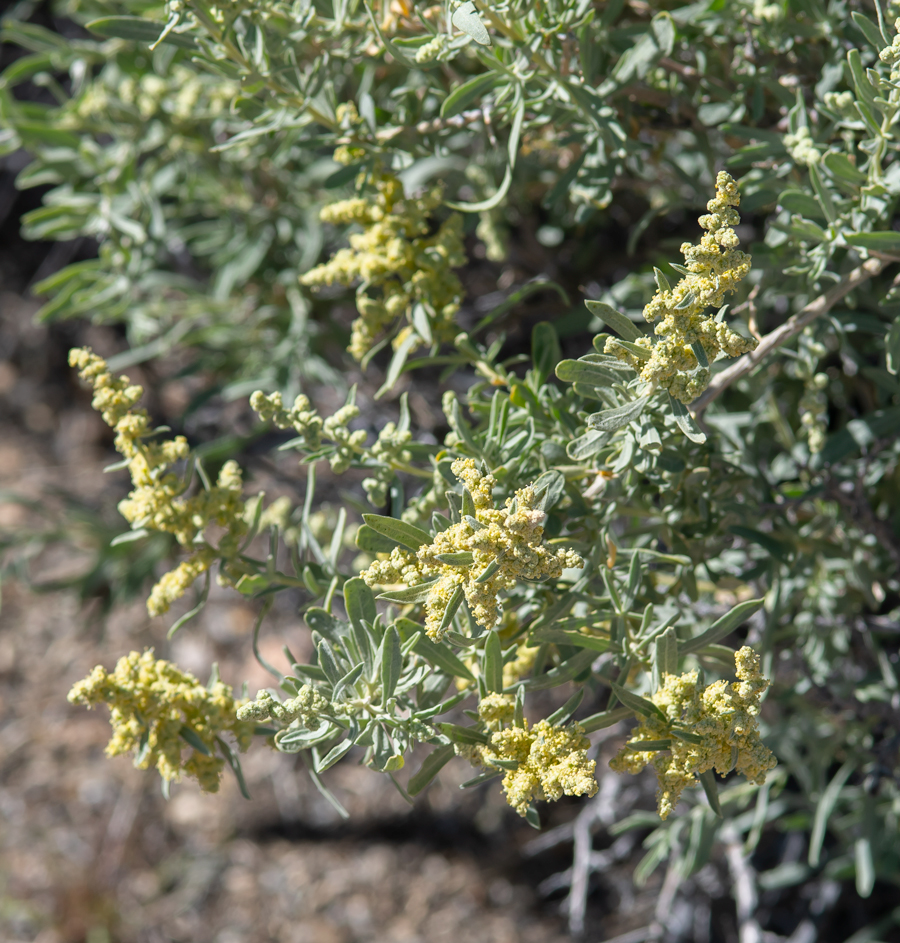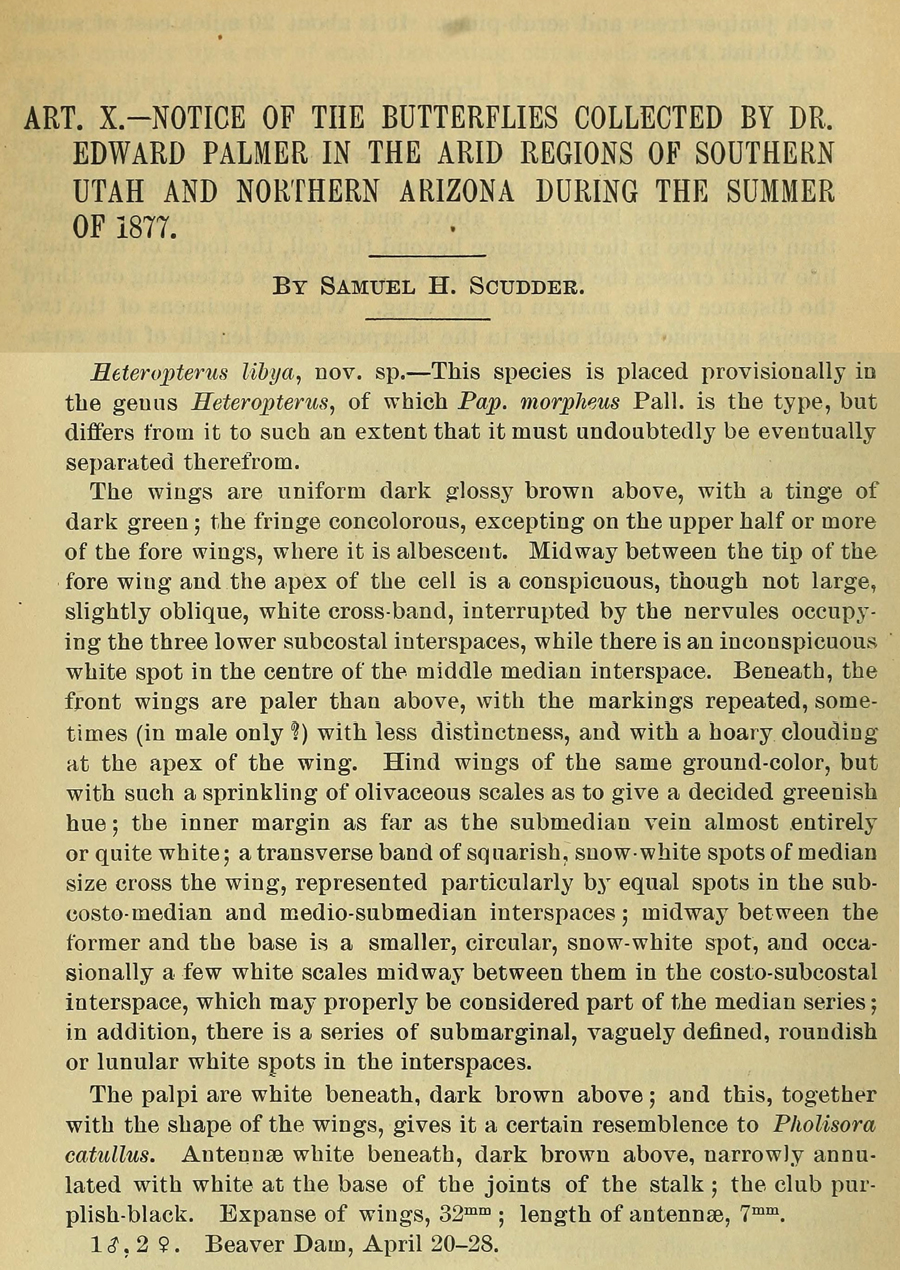Hesperopsis libya libya
Mojave Sootywing
A skipper of the deserts, the Mojave sootywing flies around the larval food plant, saltbush, sipping nectar at nearby flowers. The type locality is in the northwest corner of Arizona, along Interstate 15 close to the Utah and Nevada borders at Beaver Dam and Littlefield. Anza-Borrego is a classic location for this small, interesting spreadwing skipper. I've seen them at Yaqui Well and Scissors Crossing, around Atriplex canescens, and to the east around Ocotillo Wells as I drove into the State Park from the east once. They seem to have two flights, one around April to June, and the other around September-October, but I think the timing is dependent on rainfall patterns for a given year. I had trouble getting usable photos until late September, 2013, at Scissors Crossing, when they were common and cooperative.
Female Hesperopsis libya, the Mojave sootywing, at Scissors Crossing. September 28, 2013.
Another female Mojave sootywing from Scissors Crossing in Anza-Borrego Desert State Park. September 28, 2013.
A male Mojave sootywing, same place and time as above.
Another male, same day. They were more common than I'd ever seen them on this day at Scissors Crossing.
A ventral view of Hesperopsis libya libya, same day as above. I was after Palmer's metalmarks but was happy to see these flying in good numbers; I didn't have any photographs of males and no really good photos of females, something I was able to remedy. Sometimes the timing is just right - it was a memorable day.
For our Joshua Tree book, Gordon Pratt gave me this egg so we could illustrate the pre-adult stages. This was June 23, 2020. The caterpillar emerged a couple of days later, and I fed it on Atriplex canescens.
Here's the caterpillar after a few weeks, on July 21st.
The chrysalis, on October 9th. I don't remember whether this was from the larva above.
Atriplex canescens, a.k.a. fourwing saltbush, hoary saltbush, or shadscale, is widely distributed in southern California. This shrub was in Joshua Tree National Park.
The legendary Samuel H. Scudder named this butterfly in 1878, in the Bulletin of the United States Geological and Geographical Survey of the Territories.
©Dennis Walker
